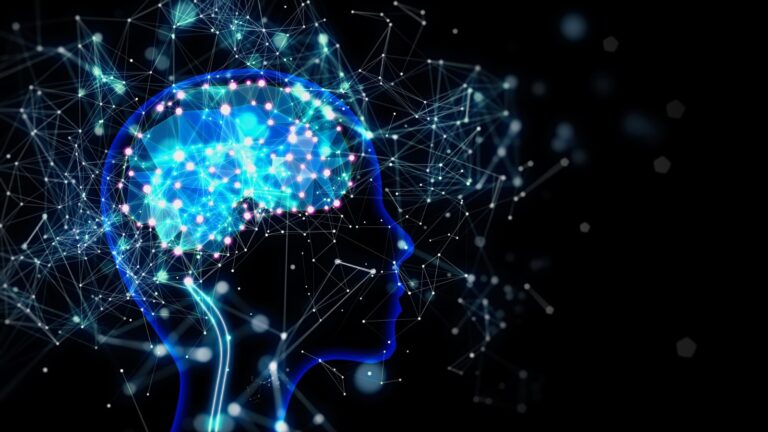
Artificial Intelligence (AI) is a digital replica of a human brain. Softwares or devices which has integrated this capability into their operations expect AI to carry out logical reasoning, demonstrate the interrelationship of the data accumulated, set and achieve goals through sequences, expects it to understand written and spoken language and can process data in different modes, be it textual, visual or auditory. It is challenging to understand AI’s nature as it is multi-dimensional. This article will consider the different ways in which AI’s nature is understood.
The Overall Picture

Researchers have been significantly interested in AI ever since Alan Turing, a mathematician, broke through the German encryption machine Enigma, which subsequently contributed to the Allied force’s efforts in winning the Second World War. His 1950 paper on Computing Machinery and Intelligence presented the critical question of whether machines can think. The tuning test and subsequent research done by other players have strengthened the literature on the progressive field of AI, which is ever-changing. Since AI algorithms have been infused, they have played an active role in the progression of many industries. Today, it is not simply a tool used by the science, computer science or business community to achieve autonomous vehicles, weapons, and drones. Instead, it is also a technology accessible to everyone as it is incorporated even in the domestic sphere as mobile phones or virtual assistants.
Types of AI

The nature of AI can be wide-ranging. Most mundane people think of AI as an unknown force that will lead to the rise in robotics. While sci-fi movies have presented AI as an all-dangerous force, it should be noted that there are many types of AI whose functionalities and capacities differ. AI can be categorised in three ways based on capability and four ways on functionality. These differences help to understand that, in reality, not all products or by-products of AI should be seen in fear.
Based on Capability

Although Siri and Alexa are known as a product of AI, they are regarded as belonging to the ‘Artificial Narrow Intelligence’ category. As denoted by this term, devices or technologies under this category are very restricted in their capabilities. This is because they are generally engineered to specialise in a specific task. Due to this, they are also regarded as ‘weak AI’ and do not have self-learning abilities. A second type of AI based on capability is Artificial General Intelligence (AGI), a category which scientists such as Stephan Hawking fear. This form of AI is meant to think and carry out tasks as perfectly as humans. Due to such a system’s high capability, it is no surprise that there are currently no AGIs worldwide. Artificial Super Intelligence (ASI) is the most powerful form of AI based on capability is Artificial Super Intelligence (ASI) which is meant to capture devices beyond human-like capabilities. They are intended to surpass human intelligence, whereby they gain an agency of their own to make decisions and have their own reasoning. It should be noted that this type of AI is hypothetical and is what movies and sci-fi novels focus on when talking about AI dominating the world.
Based on Functionality

AI that can only function on current data is known as reactive machine AI. A widely known example of this includes a game of chess. No matter how often a person plays the game, in each round, AI will only consider the data accumulated at that specific time instead of tapping into past data. This is because past actions are not stored within the system. Past experiences are, however, briefly stored in limited machine AI. As indicated by its name, previous actions are only remembered and stored briefly. Self-driving cars are an example of this form of AI. Theory of mind AI is similar to AGI, whereby machines mimic the human capabilities of decision-making processors, helping form futuristic insights. AIs that have such functions are still in the research phase. Additionally, self-awareness AI is the same as ASI, which is meant to go beyond a machine that can think in the same human intelligence and is also a hypothetical concept.
The Mindset of AI

It is essential to consider the different mindsets of AI to understand the multi-dimensional nature of AI. Usually, at a given period, only one mindset is used. Here are the five primary mindsets of AI:
Symbolic AI
This is also known as classical, rule-based AI or good old-fashioned AI. It embeds human knowledge and behaviour rules into computer programs allowing machines to replicate the ability of humans to conjure the meaning of a specific image the moment a specific symbol is identified. They create explicit structures and behaviour rules, a popular example being object-oriented programming (OOP). It is best used where the rules are clear cut and is used even today to a certain extent to make deep learning applications.
Connective AI
During this stage, structures embodied in human intelligence were integrated into AI. Under this category, neural networks embedded in AI are included. This process is similar to deep learning, which uses interconnected nodes or neurons in a layered structure like the human brain. This is also where AI developed self-learning and self-correcting, drastically improving AI’s ability to be more accurate in its functions. Even with unstructured data, AI is able to make general observations without any training.
Evolutionary AI
This refers to the use of an evolutionary algorithm, a computer application that uses mechanisms associated with biological evolution, such as reproduction, mutation and recombination. It is inspired by the Darwinian natural selection process of “survival of the fittest”. From an AI perspective, it is the survival of the stronger and more viable options, thereby eliminating weak solutions whilst the stronger ones are trained and evaluated in the next evolution. This provides increased flexibility, optimisation and feasible solutions.
Bayesian AI
Also known as belief or causal network, Bayesian AI focuses on a network that assesses the probability of an event occurring. This helps predict events and find connections between numerous variables or events. It uses directed cyclic graphics (DCGs) and considers conditional probabilities for this purpose. It is also used in various other applications, such as emails, to filter spam, process images, retrieve information for research, focuses on biomonitoring, correct nodes in communication systems and classify documents.
Analogistic AI
Analogy-making capabilities are another aspect that embodies human intelligence and their ability to learn. While there is no clear AI-based solution that has the capability to clearly formed humanlike abilities, it encapsulates this feature. Having this capability helps to make accurate and realistic predictions and counterfactuals. This is because AI can find a relationship between one situation and another. Like humans make analogies to novel situations with past experiences, AI attempts to make sense of events that have never occurred before.
How You Should Understand AI

Many people only touch the surface when attempting to understand AI. While many people state that AI is meant to mimic human intelligence, its multidimensional nature is often ignored, leading one to only think of intelligence in one way. Some people find it easier to make sense of AI through different mindsets, whereas others consider it in terms of types. As made clear by the above, however, each piece of information broadens AI’s scope. Businesses that want to incorporate such capabilities into their operations should contact a trusted and reliable vendor. Cerexio, one of the best digital solution vendors in South Asia and the world, offers a range of industry-specific solutions. Connect with us to learn more.
This article is prepared by Cerexio, a leading technology vendor that offers specialised solutions in the Advanced Manufacturing Technology Sector. The company is headquartered in Singapore and has offices even in Australia. Cerexio consists of a team of experts that have years of experience and holds detailed knowledge on a range of subject matters centric to the latest technologies offered in manufacturing and warehouse operations, as well as in predictive maintenance, digital twin, PLC & instrumentation setup, enterprise integrator, data analytics and total investment system.
